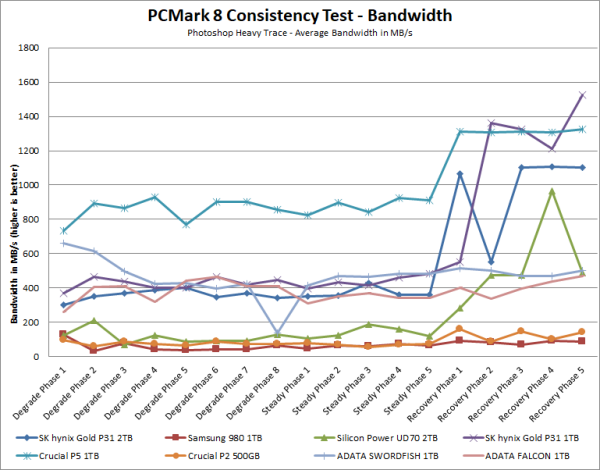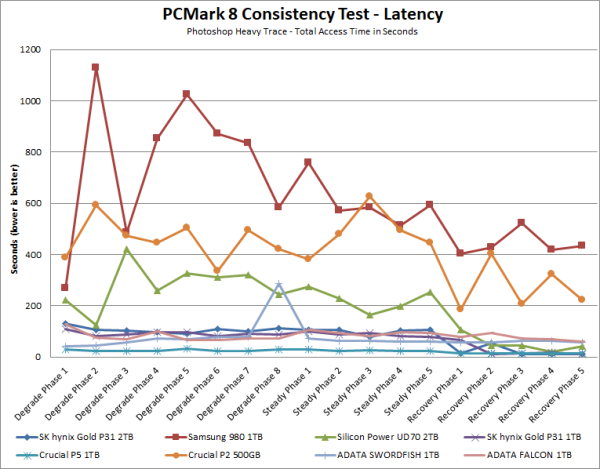PCMark 8 - Storage Test:
PCMark 8 is a complete benchmark for Windows. It includes five benchmark tests, each designed around a specific scenario. The storage benchmark measures drive performance using real-world traces recorded from Adobe Creative Suite, Microsoft Office and a selection of popular games.

PCMark 8 also includes a consistency test which measures the performance consistency and degradation tendency of a storage system. The test reports the performance level at the start, the degraded steady-state and the recovered state as well as the number of iterations required to reach the degraded state and the recovered state. For this test, we are focusing on the Adobe Photoshop (Heavy) trace and will look at both the bandwidth and latency of the drive


The 2TB Gold P31 did quite well throughout PCMark's consistency test. While not nearly as fast as the Crucial P5, it performed better than the drives from Samsung and Silicon Power during the degradation and steady state phases. The Gold P31's performance also increased during the recovery phase, topping out at about 1,108 MB/s.
PCMark 10 - Full System Drive Benchmark:
PCMark 10's Full System Drive Benchmark uses a wide-ranging set of real-world traces from popular applications and common tasks to fully test the performance of the fastest modern drives. This benchmark produces an overall score as a measure of drive performance. Comparing devices is as simple as comparing scores. The tests also measure and report the bandwidth and average access time performance for the drive.

Thanks to its high bandwidth and low latency, the 2TB Gold P31 did quite well in PCMark 10's Full System Drive Benchmark. Unfortunately, this wasn't enough to top the Plextor M9PG Plus, Samsung 980 or the 1TB version of the Gold P31.

